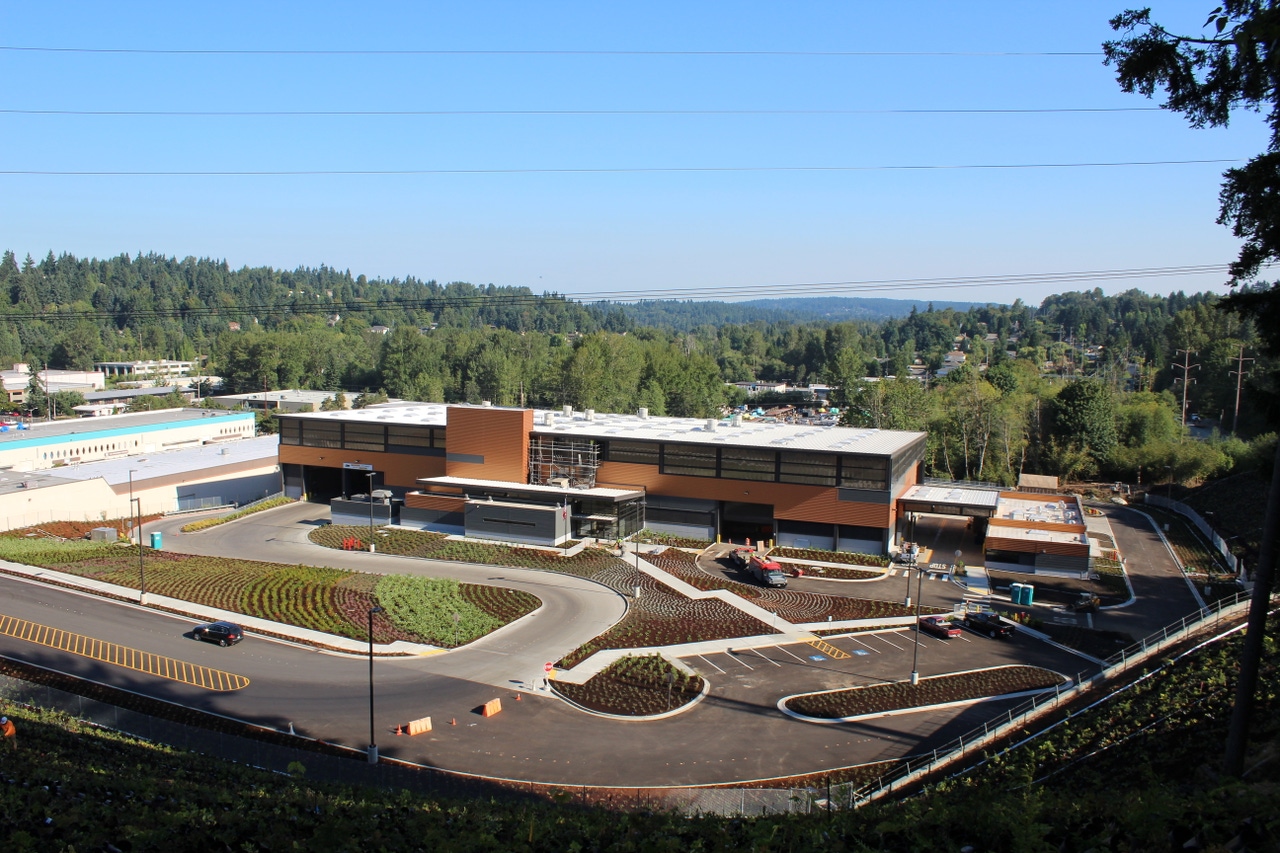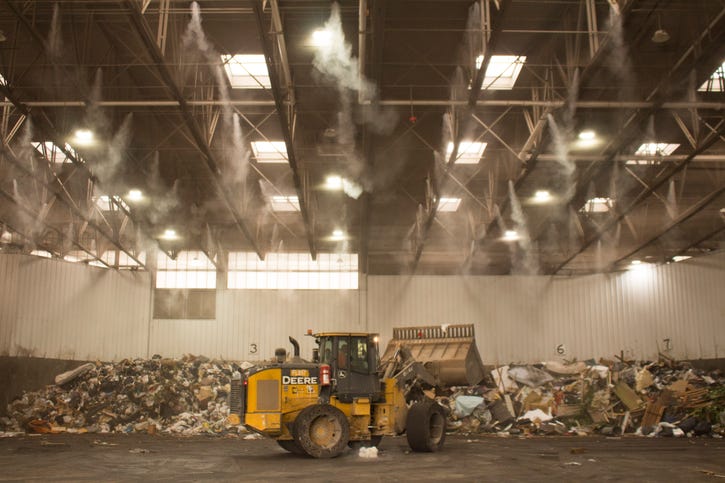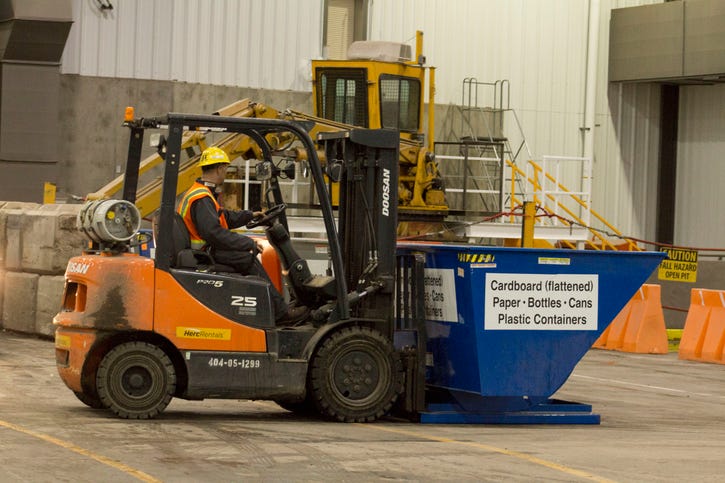County Goes from Zero Diversion to State-of-the-art Recovery System
After investing in a new transfer station, King County, Wash., has gone from zero diversion to 3,658 tons in the first 10 months of 2018.

King County, Wash.’s 50-plus-year-old transfer station was having significant design and operational issues, not to mention it did not take recyclables of any kind. So, the county invested $92.8 million in a new facility.
With this major build, the jurisdiction has gone from zero diversion to 3,658 tons in the first 10 months of 2018 alone. This equates to 16.68 percent diversion. And the site—Factoria Recycling and Transfer Station—receives and reroutes more than your standard blue bin materials.
The state-of-the-art design also just earned gold Leadership in Energy and Environmental Design (LEED) certification.
Factoria takes in yard waste, textiles and household hazardous materials, from mercury-containing lighting, to sharps, to solvents, to untreated wood.
New building and design sustainability features have resulted in a 35 percent decrease in overall energy use (heat and electricity), including saving 65 percent savings in electricity for lighting. And it saves 1.3 million gallons of water a year.
The 80,000-square-foot facility handles 225,000 tons of materials annually. It has a lot of streams to sort through and move, but new equipment, and especially a large, flat tipping floor, provide more flexibility to organize, process and send on for reuse, says Kerwin Pyle, King County Solid Waste Division project program manager for recycling and transfer stations.

“If haulers have loads with value, transfer station operators can direct them to dump in more convenient places, and they can pull scrap. We have areas segregated just for clean wood or just for scrap metal, for example, when before it was all dumped in a trailer and landfilled,” says Pyle.
The agency created a 30-year waste volume projection. Then, it resolved to build the largest facility possible for the budget it had, to be able to turn trash into commodities.
Green waste is hauled to a private composter. Hazardous waste goes to a separate, adjoining facility for reuse, recycling or disposal. Asphalt is ground and sent to an asphalt producer to incorporate into new pavement. Wood moves on to a processor to be made into products like plywood. And garbage goes to Cedar Hills Landfill.
Pushing for maximum diversion was a key focus through the entire construction process.
“We diverted 95 percent of the construction and demolition waste—that was the county’s goal. It’s fairly easy to get 75 percent, but 95 percent is very hard,” says Jeff Pietz, project manager for PCL Construction, which was contracted to manage this waste.
His company set up collection bins and did extensive work to source separate and send materials where they needed to go.

“There was a temporary soldier pile wall with wood legging between piles. We had to tear it out, and it was good lumber, so we reused it for miscellaneous forming [like bracing] and other projects. Metal got chopped and sent to recyclers. Concrete went to a processing facility that breaks it down for reuse as base material for roadways. Asphalt was ground and made into recycling products,” says Pietz.
The completed facility has sustainability features like translucent wall panels and overhead and tubular skylights. And a water reclamation system collects rainwater from the roof for reuse in the facility.
“We also have an underground storage system with a 1.1 million gallon capacity that collects stormwater and filters it. So, it’s better for our environment and helps control runoff, just as the other features have their environmental attributes, such as use of recycled materials like asphalt in parking lots and driveways,” says Nori Catabay, King County Solid Waste Division program manager for the green building team.
Environmental architectural and engineering firm HDR developed the facility master plan and oversaw the design process. Finetuning details took time, as there were changes in anticipated tonnage from early planning phases until toward the end of the project when tonnage was shooting up.
During the design process, you need to react to anticipated tonnage changes, explains Mary Shanks, HDR resources project manager.
“But the most interesting thing about the project was what needed to happen in order to keep the old facility going throughout the process,” she says.
“We had to determine ways to route traffic, install a 40-foot temporary wall and do extra earth work planning to deal with elevation changes as the old transfer station was a good bit higher than the new one,” she says.
A payoff was that customers didn’t have to be rerouted to other transfer stations. And staff could report to the same location.
About the Author
You May Also Like




